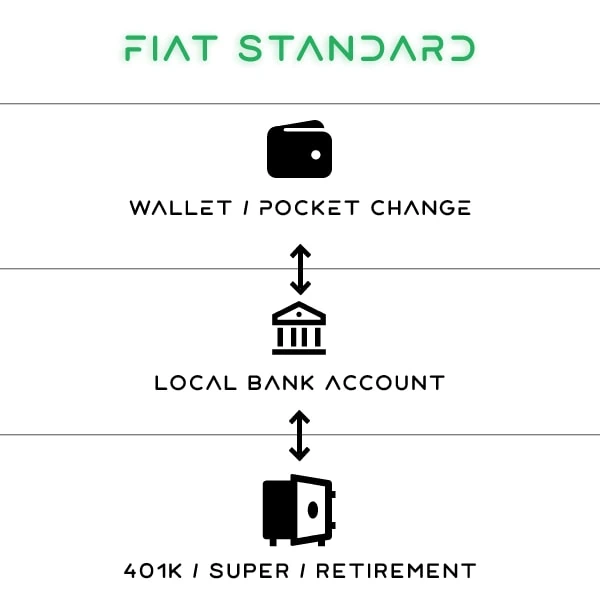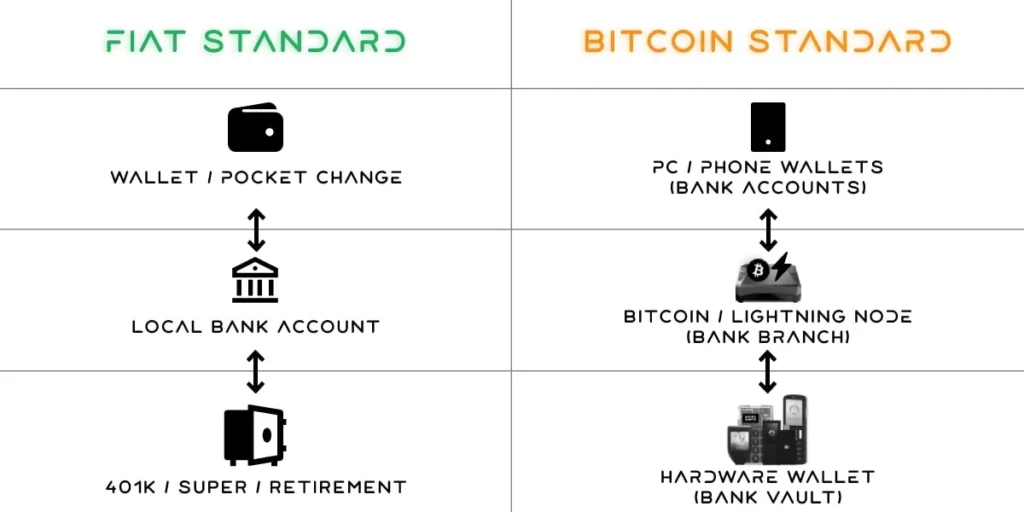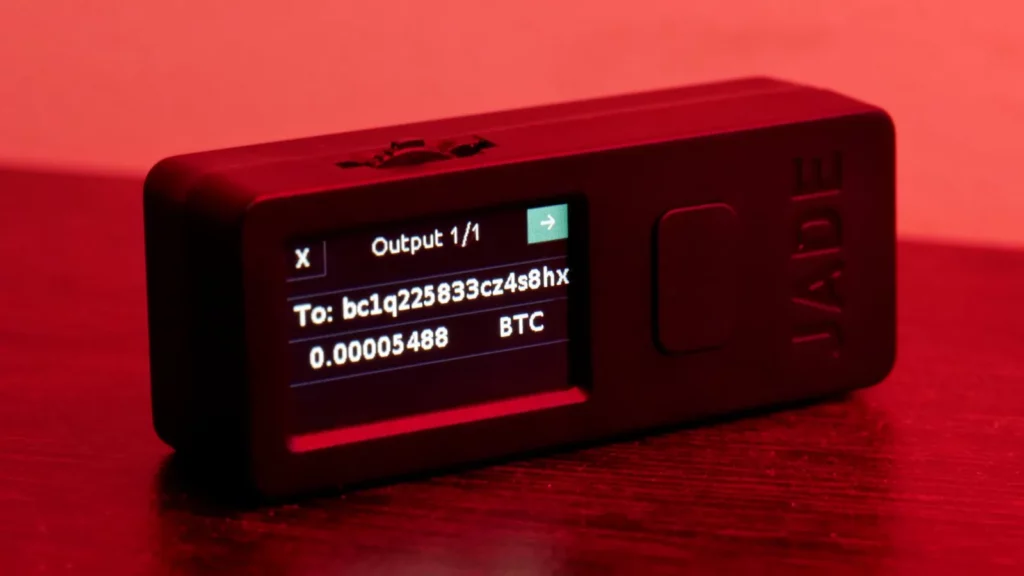As you use Bitcoin more and more you’ll likely amass wallets and hardware all over the place. Old ones, new ones, things you’ve upgraded to or hardware wallets that you’ve left behind *cough* Ledger *cough cough*. So today we’re going to help organize all this by describing a solid framework on how to manage your Bitcoin.
Contents
What This Article Is & Isn’t
To be clear, this article isn’t about how to securely store your bitcoin. We won’t be covering how to protect your private keys, whether you should use a hardware wallet or not (you should) or other such topics. If you’re looking for these types of guides, please see our other articles below:
- A Beginners Guide To Bitcoin Security
- How To Protect Your Bitcoin Private Key
- How To Protect Your Crypto: An Ultimate Guide
- Sparrow Wallet: Ultimate Quick Start
- How To Create A Multisig Wallet
Instead, this article is going to be about how to mentally and literally organize your Bitcoin finances in a broader sense. Specifically it will explain how to manage your Bitcoin wallets so that it allows for the best functionality, privacy and security.
For example, should you just have one single bitcoin wallet that everything goes in and out of? Should you have two? Ten? Should they all be software wallets? How much should you keep in each? How should your funds flow from one wallet to another?
These are the types of questions we’ll be investigating today and while they might sound complicated, their answers are actually quite obvious and intuitive. This is because it’s very similar to what most people do day to day with their fiat funds.
Note: While we believe this is an excellent way to organize your Bitcoin funds, it is still our opinion. There are many different possible ways to configure everything and what’s best for you personally might be different from below. Above all else, make sure you test any new setups with a small amount of funds first and build up knowledge and experience before fully moving the bulk of your funds over.
The Fiat Standard

If we asked you to describe how you manage your fiat wallets, it’d likely be something like:
- Wallet: I keep pocket change in my wallet with me, maybe a few coins, a $20 bill etc
- Local Bank: I have a bank account that has, maybe a few hundred to few thousand in it
- Retirement: I have a retirement account that has multiple thousands in it for the future
This is hopefully relatable, intuitive and normal to you.
As you learn about Bitcoin more and more you will begin to use it more and more. At first you might buy some just to see how it works. Then a little more as an investment perhaps. Hopefully you buy a secure and private hardware Crypto Wallet and take full self custody of those coins.
After a bit longer you might start using the Lightning Network to buy things. Maybe you run your own full Bitcoin Node to increase your privacy and security. As your understanding and use of Bitcoin grows you’ll soon approach the realization that you should reformat your entire life to the Bitcoin Standard.
The Bitcoin Standard
To be on the Bitcoin Standard means that you measure everything in Bitcoin rather than some other fiat currency like USD or EUR. For example an apple doesn’t cost $1, it costs 2,000 satoshi. You don’t have “$1,000 worth of Bitcoin”, you have 0.02 BTC. All your assets, cash flow and liabilities are measured in bitcoin with it being your Unit Of Account.
At this point, it also makes sense to overhaul how you manage your Bitcoin wallets away from the traditional fiat mentality and into the Bitcoin way. So how exactly should you be securely managing your new Bitcoin? What is the best Bitcoin management strategy?

How fiat wallets, bank accounts and retirement accounts like a 401K work and manage wealth should be pretty obvious to most so we’ll skip explaining it. Looking on the Bitcoin side of the above image though things might not be so clear.
A helpful way to manage your bitcoin is to imagine you’re a bank business owner. You own and operate your own private Bitcoin bank. You own the vaults, the bank branch, the computer systems, you have customer bank accounts, cash, online accounts. All of it.
How To Manage Your Bitcoin Funds
As the owner you want to be smart, so you segregate your funds into different secure locations. These different locations are:
- Bank Vault / Cold Storage / Hardware Wallet: This contains most of your banks money. It’s also the most secure area where no one but you has access to it. There’s no connectivity to the internet or outside world and there’s no third parties involved. You alone hold the keys and no one can stop you from accessing your funds
- Bank Branch / Bitcoin & Lightning Node: This contains a small to medium amount of money. It’s connected to the internet and although it has good security, you’re aware that at any time, it may get attacked by robbers and all of the money stored in it could be stolen. As such, you only keep in it what’s necessary for the day to day operations of the bank. If it gets low, you top it up from time to time from the Bank Vault funds. Similarly if it gets too full, you move some of the money into the Bank Vault for safe keeping

When we say Bank Vault / Hardware Wallet, this could mean a single signature hardware wallet or maybe it’s a Multisig Wallet, either way the private key(s) that control the Bitcoin funds are kept offline and locked down in a specialized hardware device. Funds almost exclusively flow into the hardware wallet and remain there for years at a time. Safe. Secure.
Looking at the Bank Branch / Node, whether it’s a home made Raspberry Pi running something like Umbrel, a purpose built Start9 Server Pure or many other varieties, it is operated and fully controlled by you and is what all your wallets connect back to.
Bitcoin based wallets connect back to Electrs and use the full node to verify and broadcast all transactions. Lightning Wallets connect back to the Lightning Node and use the Lightning Channels the node has to send and receive lightning payments with other users.
Bitcoin Wallets
The top layer, your Bank Accounts / Smartphone Wallets, can be many different things. It’s recommended that most, if not all, of these wallets should all connect back to your Bitcoin or Lightning Node, preferably over Tor or a good VPN. This is to maximize your privacy and security. Here are a few different options:
- PC Wallet: Software like Sparrow Wallet or Electrum are their own stand alone wallets, but they should connect to your full node to give you the highest level of security and privacy
- Smartphone Lightning Node Manager: Apps like Zeus or Zap allow you to remotely manage your Lightning Node, its main wallet and its Lightning Channels. They aren’t a separate wallet, they control your nodes wallets
- Smartphone Lightning Wallets: Apps like Phoenix or Wallet of Satoshi are custodial, meaning that these companies hold onto the bitcoin you send to them for you. While these can be easier to use and setup as you don’t have to manage Lightning Channels, it’s recommended not to use them if you can as one of the main points of Bitcoin is to hold your own coins and Lightning is no different
Fund Flows & Coordination
Now that we have the basic hardware setup (your Hardware Wallet / Bank Vault and your Bitcoin / Lightning Node) we need to coordinate it all with how funds flow in and out.
As mentioned before, the vast bulk of your funds should permanently stay in your Hardware Wallet / Bank Vault. If you start to find you’re getting a bit too much accumulating in your Bitcoin / Lightning Node, you can withdraw some into your Hardware Wallet for safe keeping.
When it comes to various sources such as income earned in bitcoin, friends or family sending you bitcoin or bitcoin bought from non-KYC Exchanges (be they CEX, DEX or P2P), these new funds will typically flow into your Lightning Node / Bank Branch wallets. If you’re buying bitcoin on-chain, then you can also send it directly to your hardware wallet.
If you’re purchasing goods and services, these can be paid for using your Lightning Node / Bank Branch wallets. You can also use these wallets to fund new Lightning Channels, perform Coin Control or even use Bitcoin Mixers if you wish.
Overall you should see funds going in and out of your node just like you might see funds go into and out of your fiat bank account day to day. Occasionally, maybe each pay day, you might send a big chunk of savings over to your hardware wallet.
A Brave New World
As said, while things are different with a Bitcoin Standard, they’re actually quite similar.
The biggest and most profound difference though is that in the fiat world, you only really own the money that’s in your wallet. The coins and notes are yours… but nothing else is, they’re just IOU’s.
The money in your local bank branch? That’s an IOU that they can freeze, confiscate or completely steal from you at any time. While a big bank in a first world country doing these things might seem a bit far fetched (we’re definitely not conspiracy theorists around here), we can’t ignore the fact that it’s already happening constantly in every country all around the world.
From protestors in Canada having all their accounts frozen, to banks in Cyprus stealing their customers deposits (what they called a “bail in“) to banks in the UK locking their own customers out from transacting with their own money. Just because it hasn’t happened to you yet, doesn’t mean it won’t.
By contrast, on a Bitcoin Standard you have full property rights and ownership over all your funds. No one can seize your accounts or funds. No one can stop you from buying or selling your funds for goods and services. No one can steal your wealth via inflation. In short:
Bitcoin is “fuck you money.”
Jameson Lopp
This ownership extends from the bottom to the top of the chain. From your long term savings held in a bank vault, right up to the smartphone app that has access to send $0.01 USD worth of bitcoin anywhere in the world instantly via the Lightning Network.
Managing bitcoin isn’t hard, but it is new and different to fiat. This is mostly due to the fact that you can now actually take responsibility for your wealth and manage it how you wish with no third parties interfering or sucking your life energy away. People aren’t used to that. But they’ll learn.
10 years from now we’ll likely look back at articles like this as being “common sense” and wonder how people could have ever not understood how to do it. Just like how we see people in videos from the 90’s asking about what “email is”.
If you’re reading this now and transitioning to a Bitcoin Standard life, then congratulations, you’re way, way ahead of the curve!



